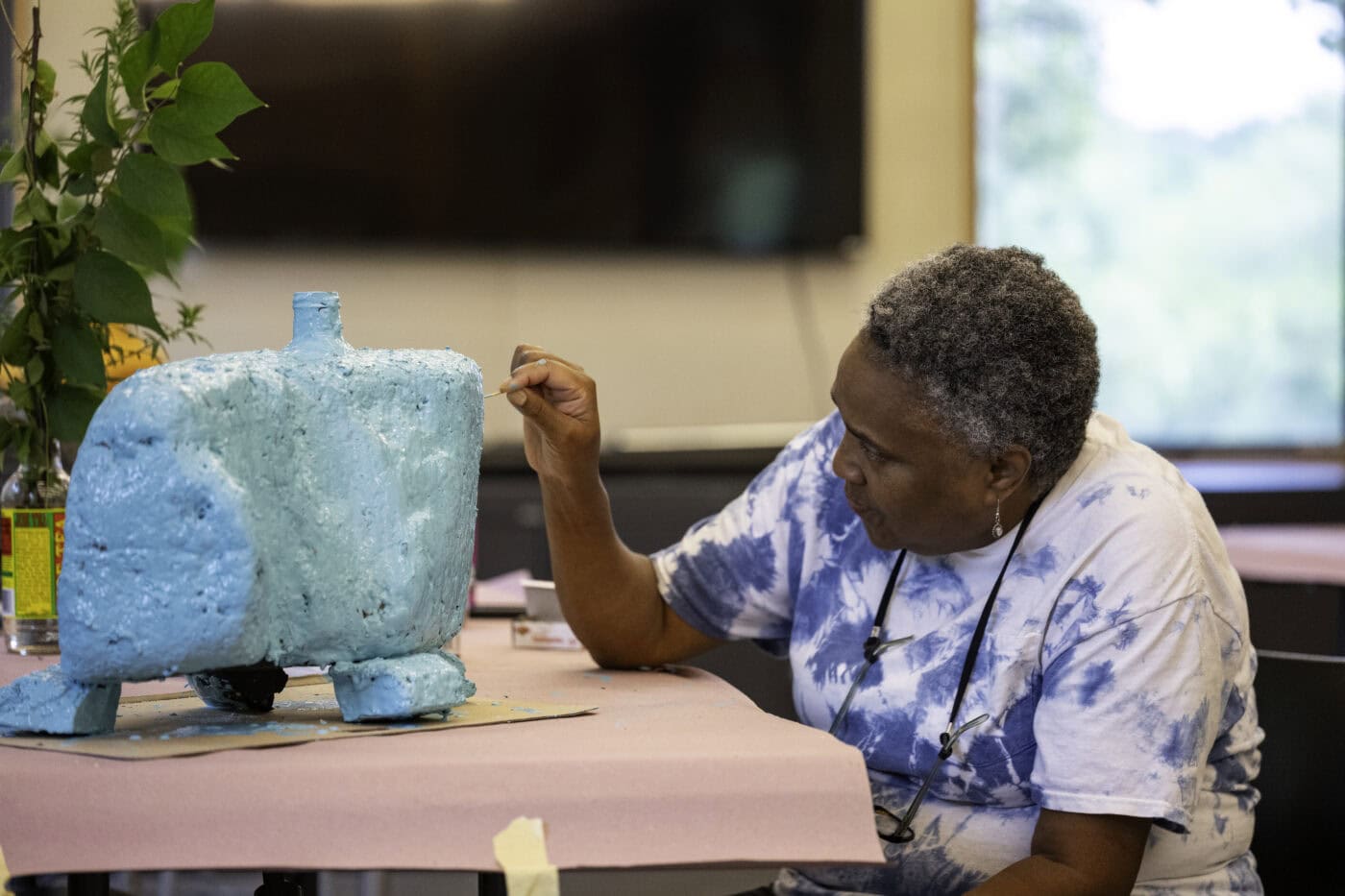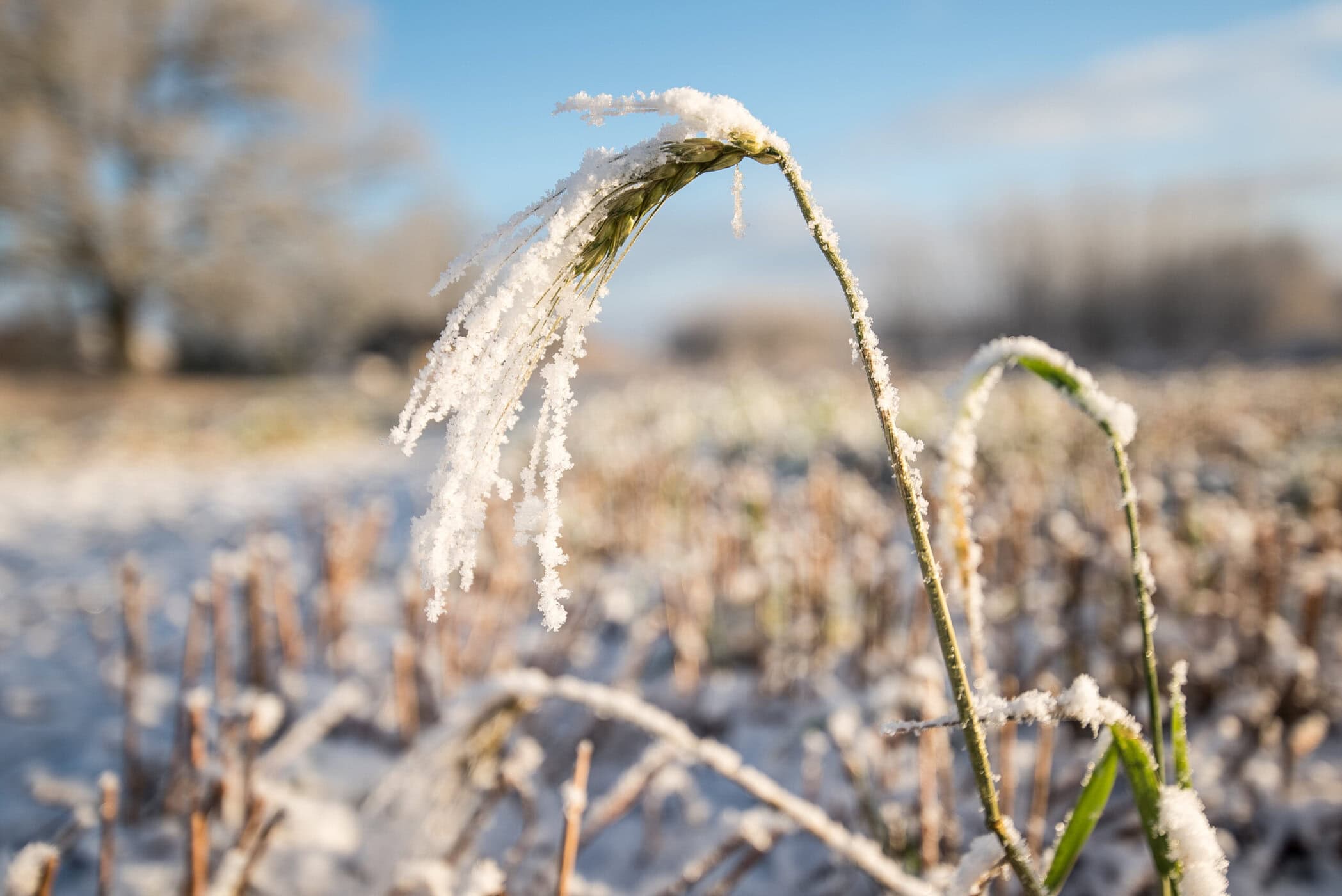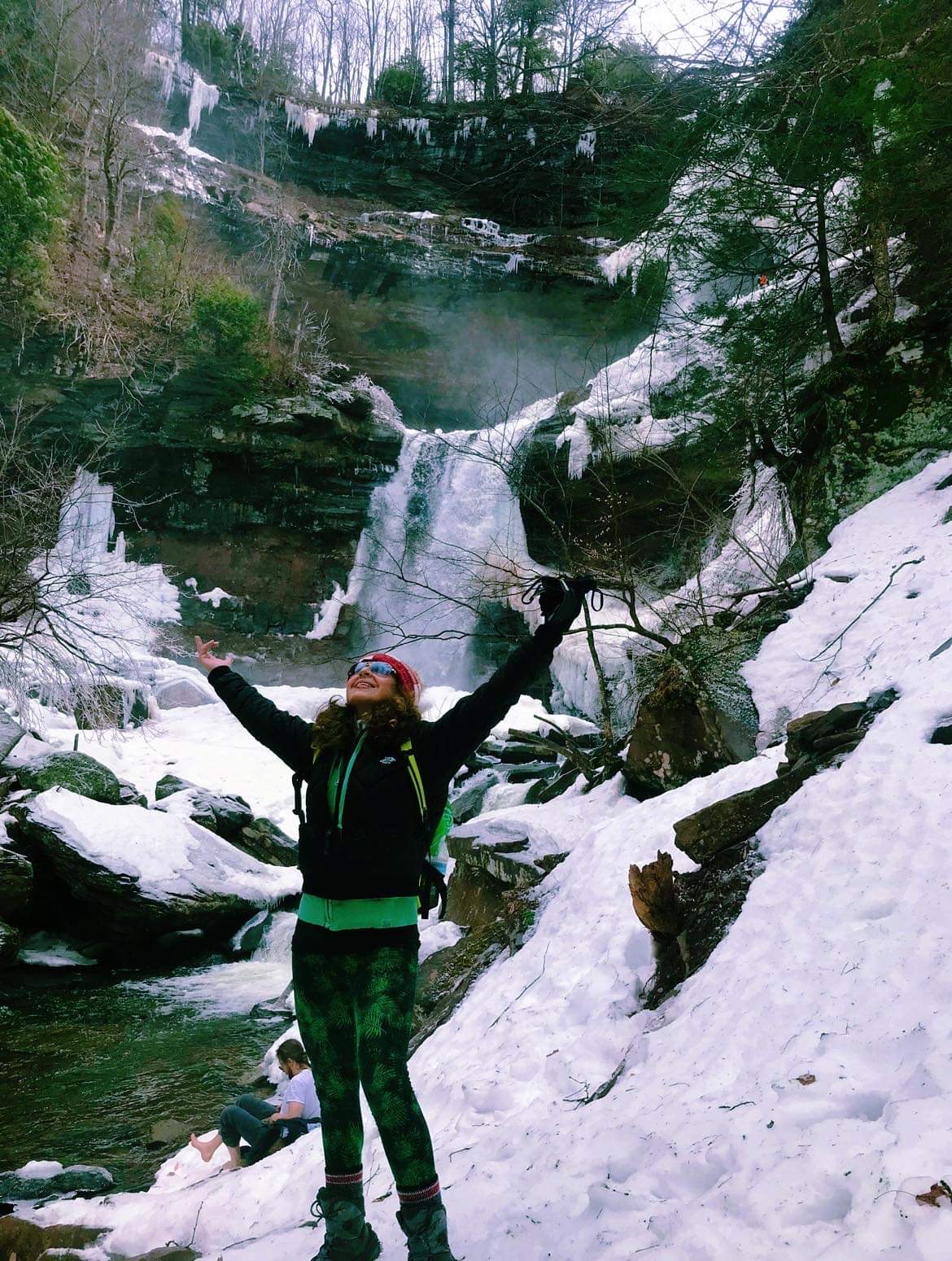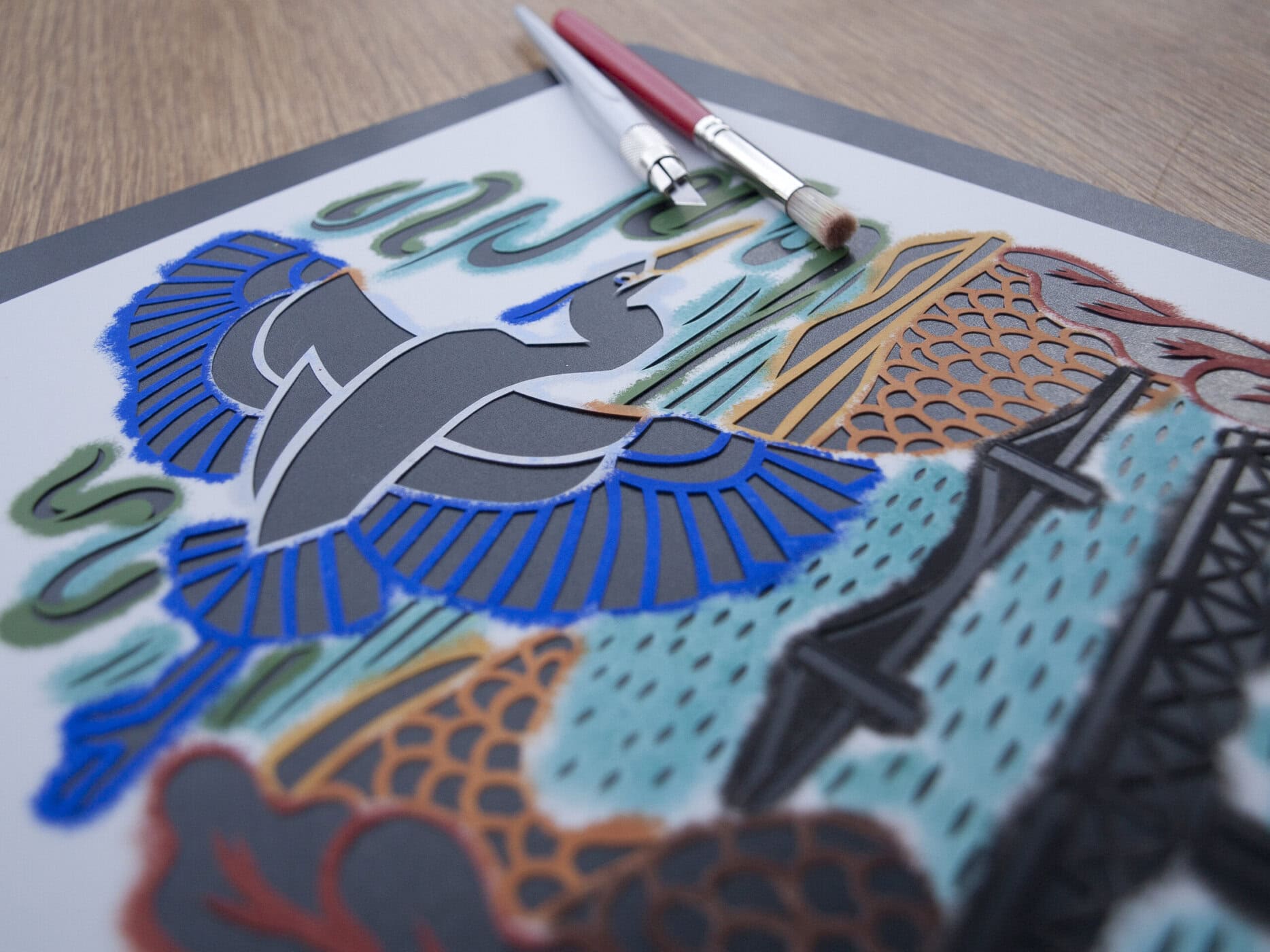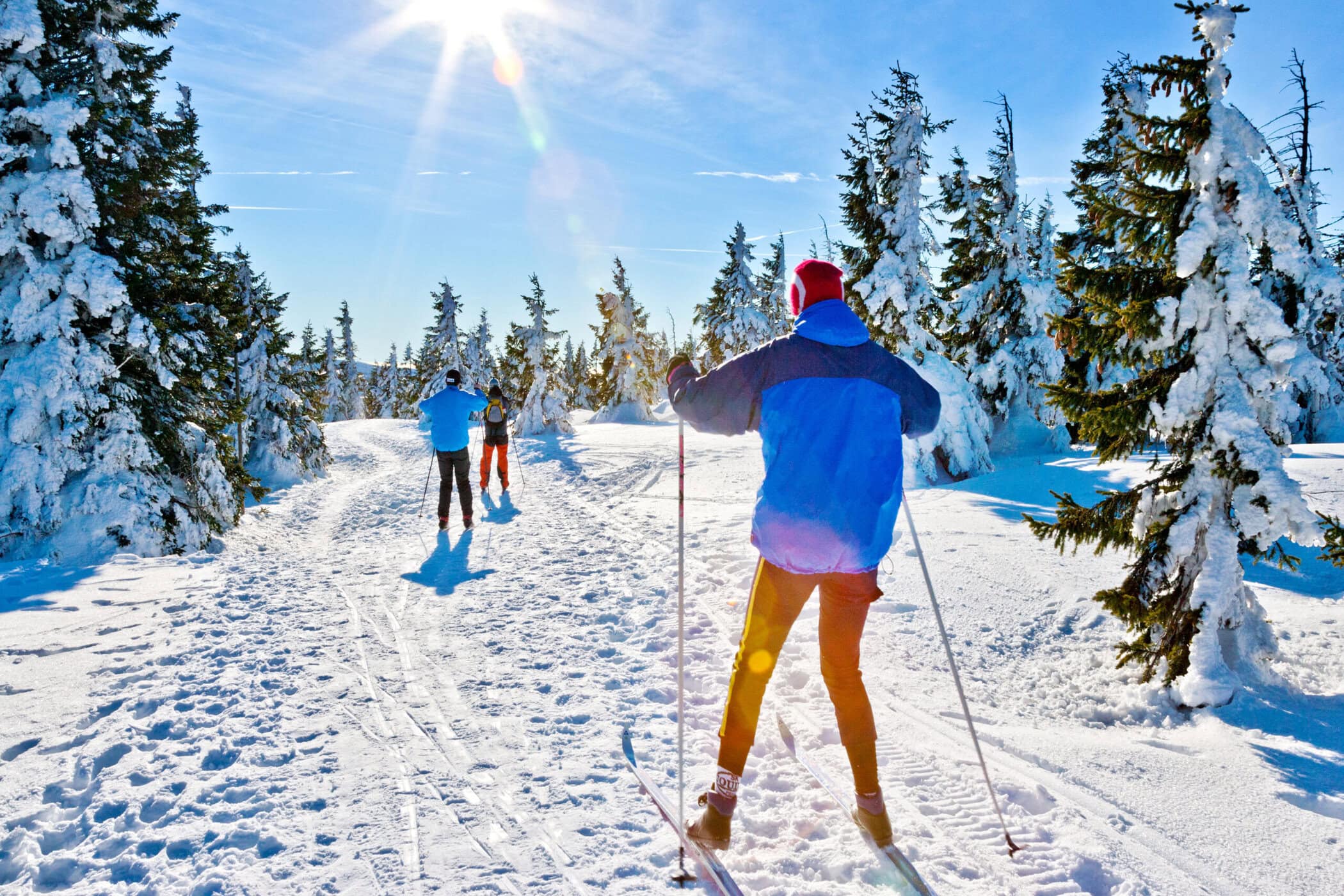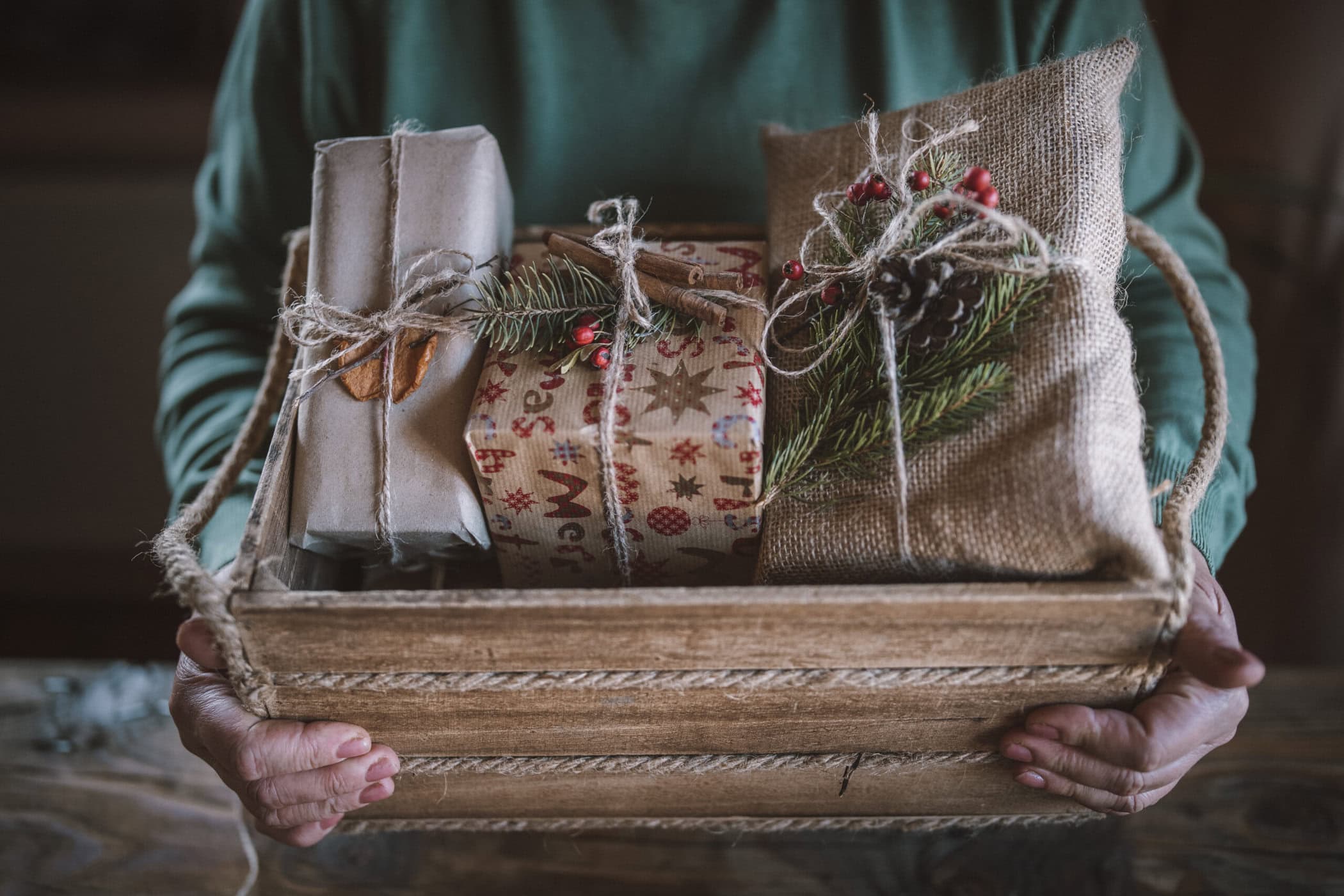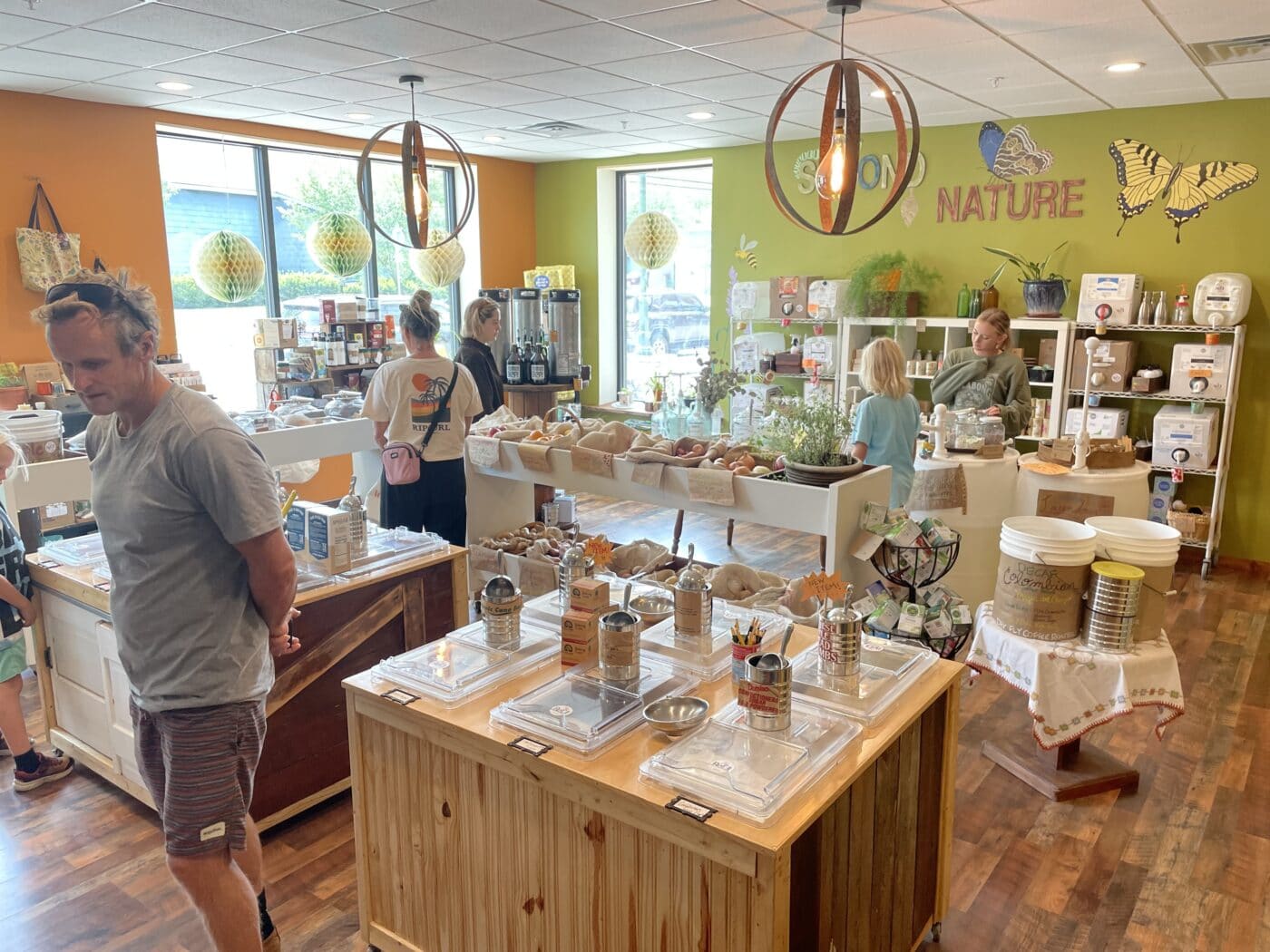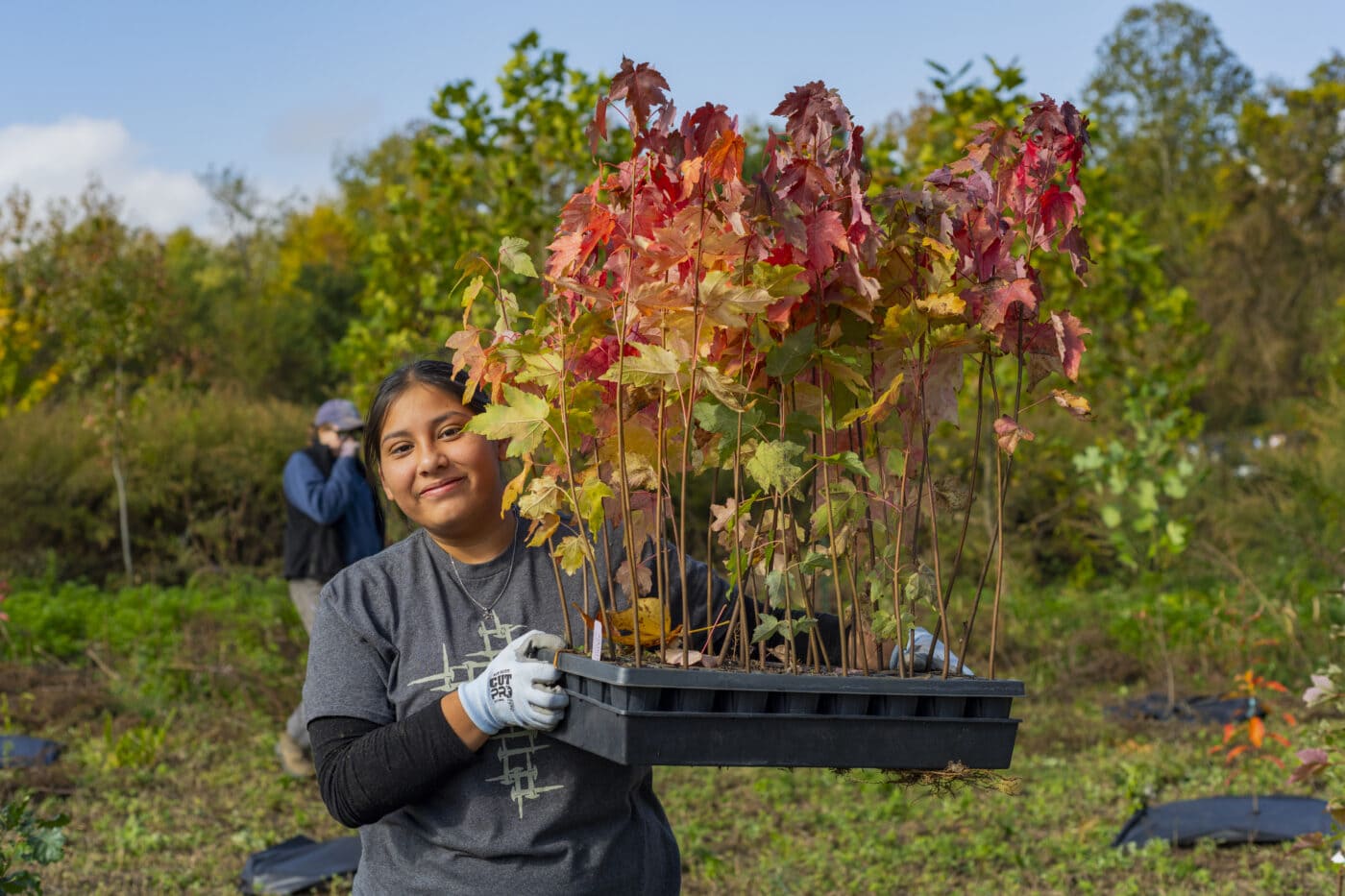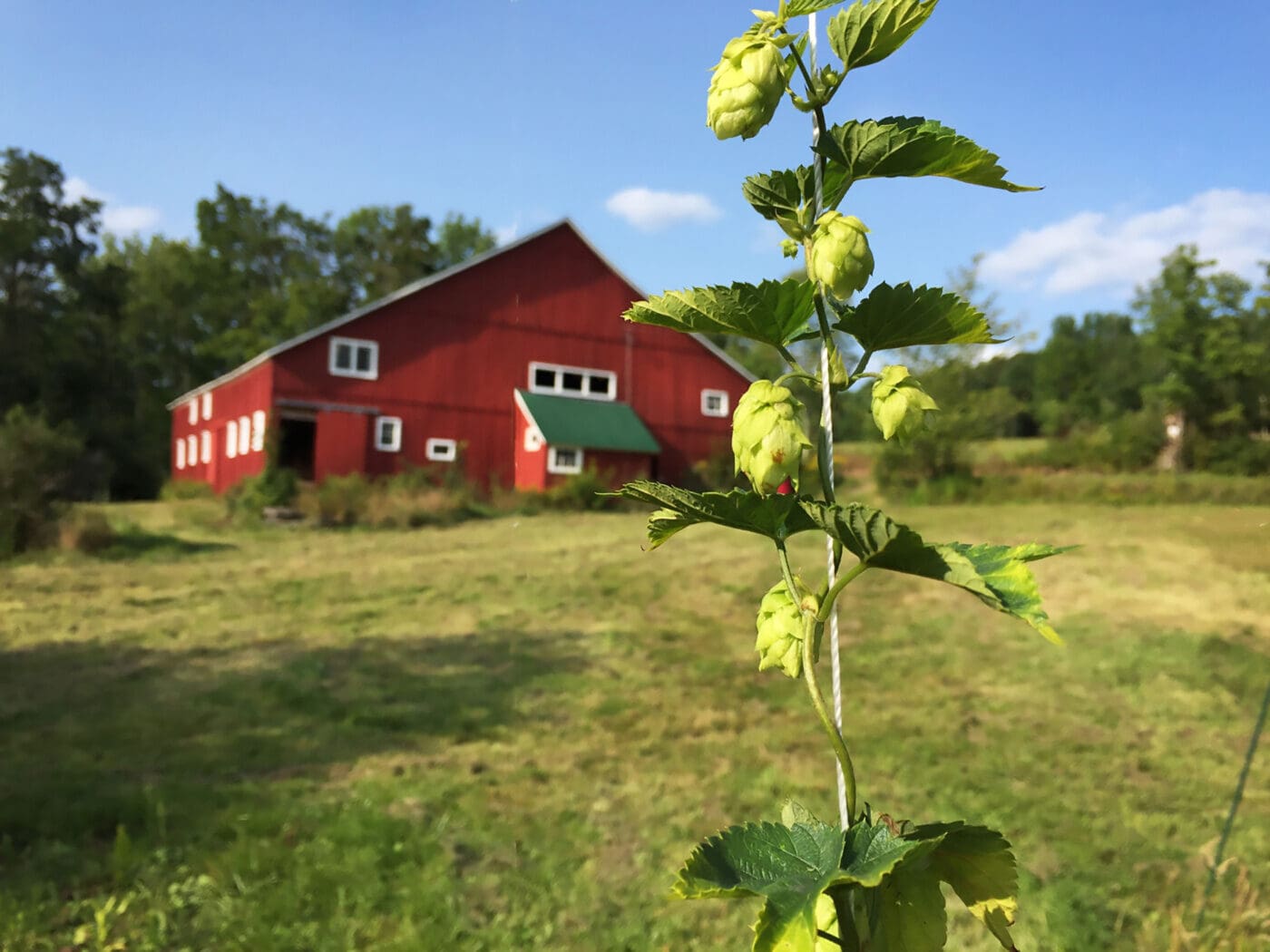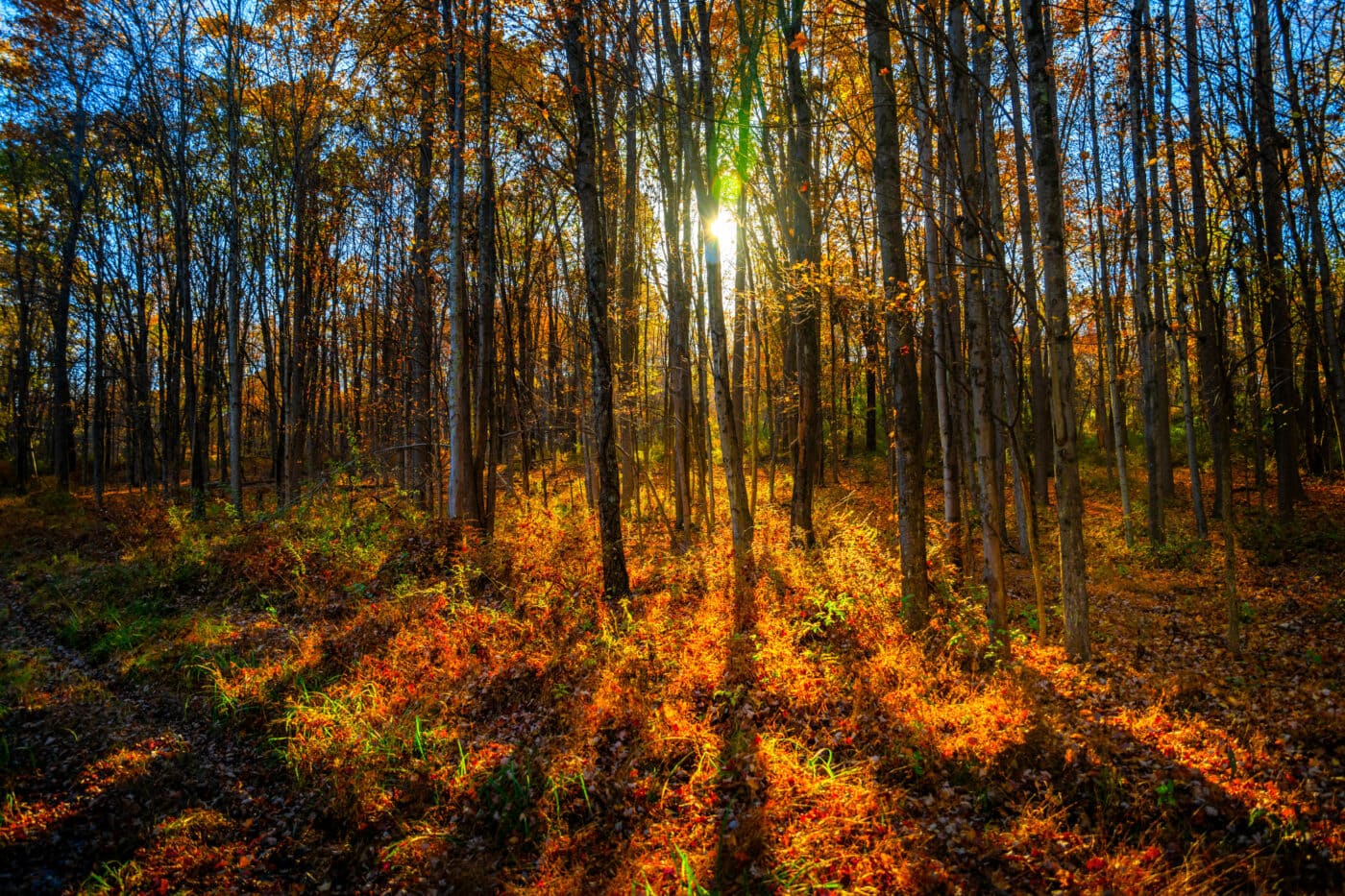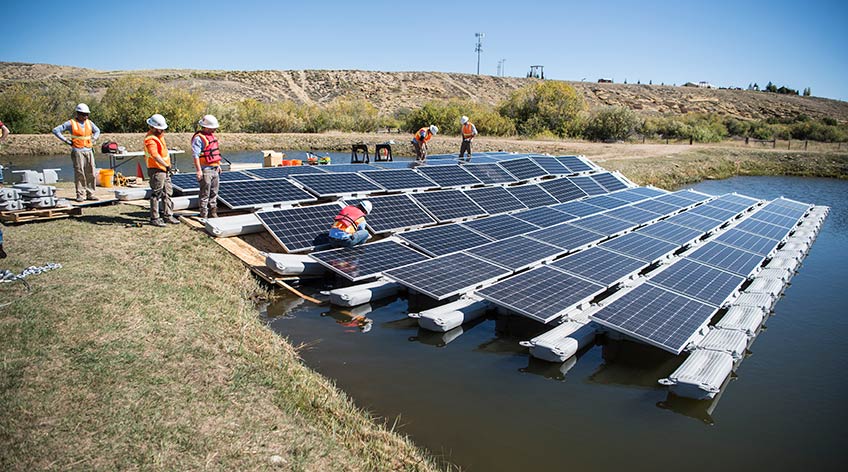If you’ve ever done a cleanup along the Hudson River, or just walked along its banks, the trash you might’ve seen most is styrofoam. Whether it’s from old takeout containers or material that floated away from docks, it seems to collect nearly everywhere water meets land.
Then there are the invasive plants. Jennifer Lauren Smith calls them the “local baddies: knotweed, honeysuckle, tree of heaven, mugwort, swallow wort, barberry, crown vetch, and wineberries.”
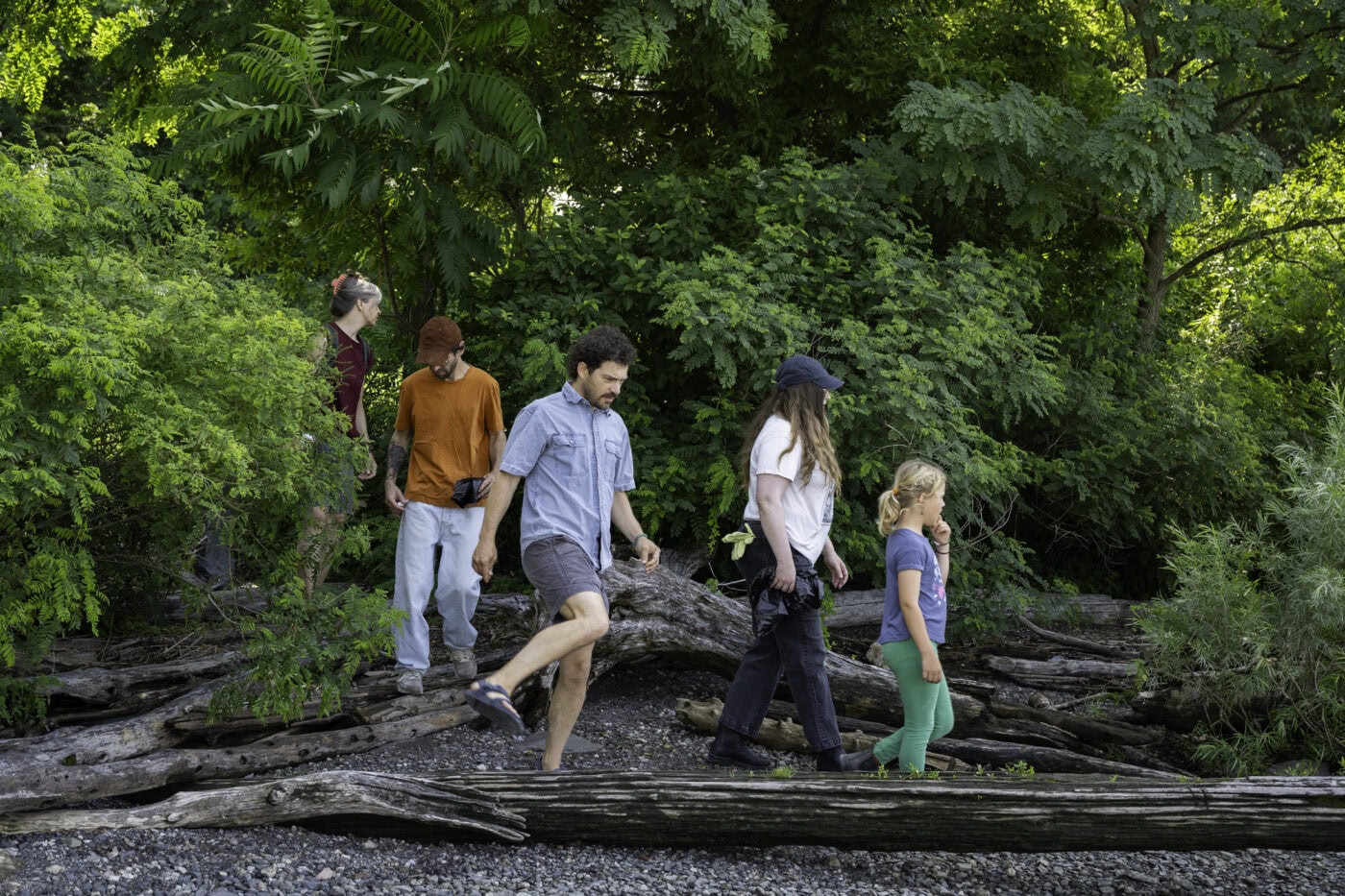
Smith and her partner Andrew Brehm, a fellow artist, have developed a way to convert both foam waste and invasive plants into art from the river. They call it “InVASive Arrangements: Vases Constructed from River Flotsam for Holding Bad Weeds.” In July, the pair served as artists in residence with the Beacon-based environmental organization Soon Is Now, and they led a workshop on creating eco-art at Scenic Hudson’s Long Dock Park. I was lucky enough to participate.
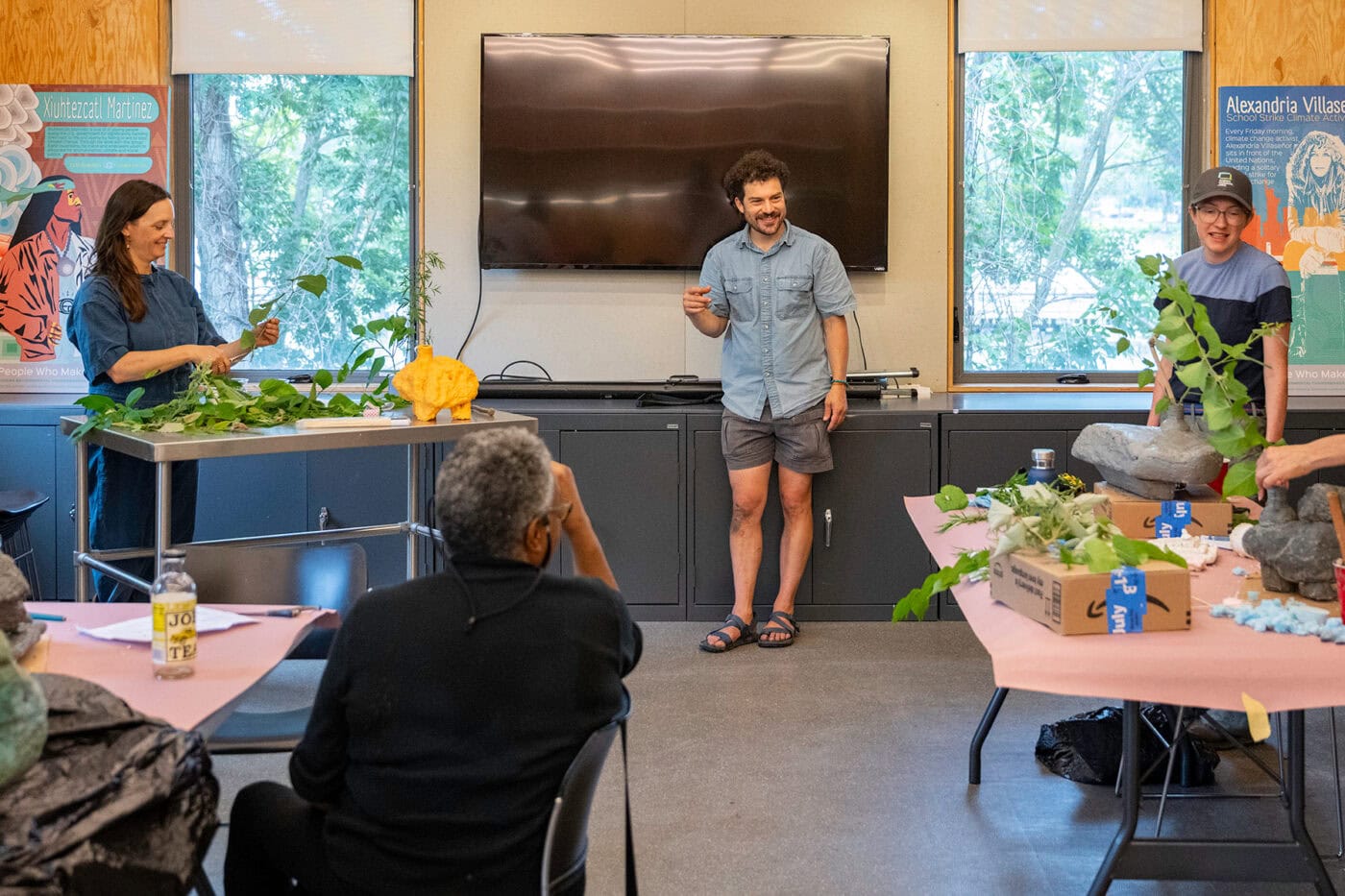
Andrew opened with an inspirational intro, making it clear he brought experience as an instructor. Foam that washes up on the shores of the Hudson, is influenced by the river flowing in both directions, he said. He mentioned the Indigenous name for the river, Mahicantuck.
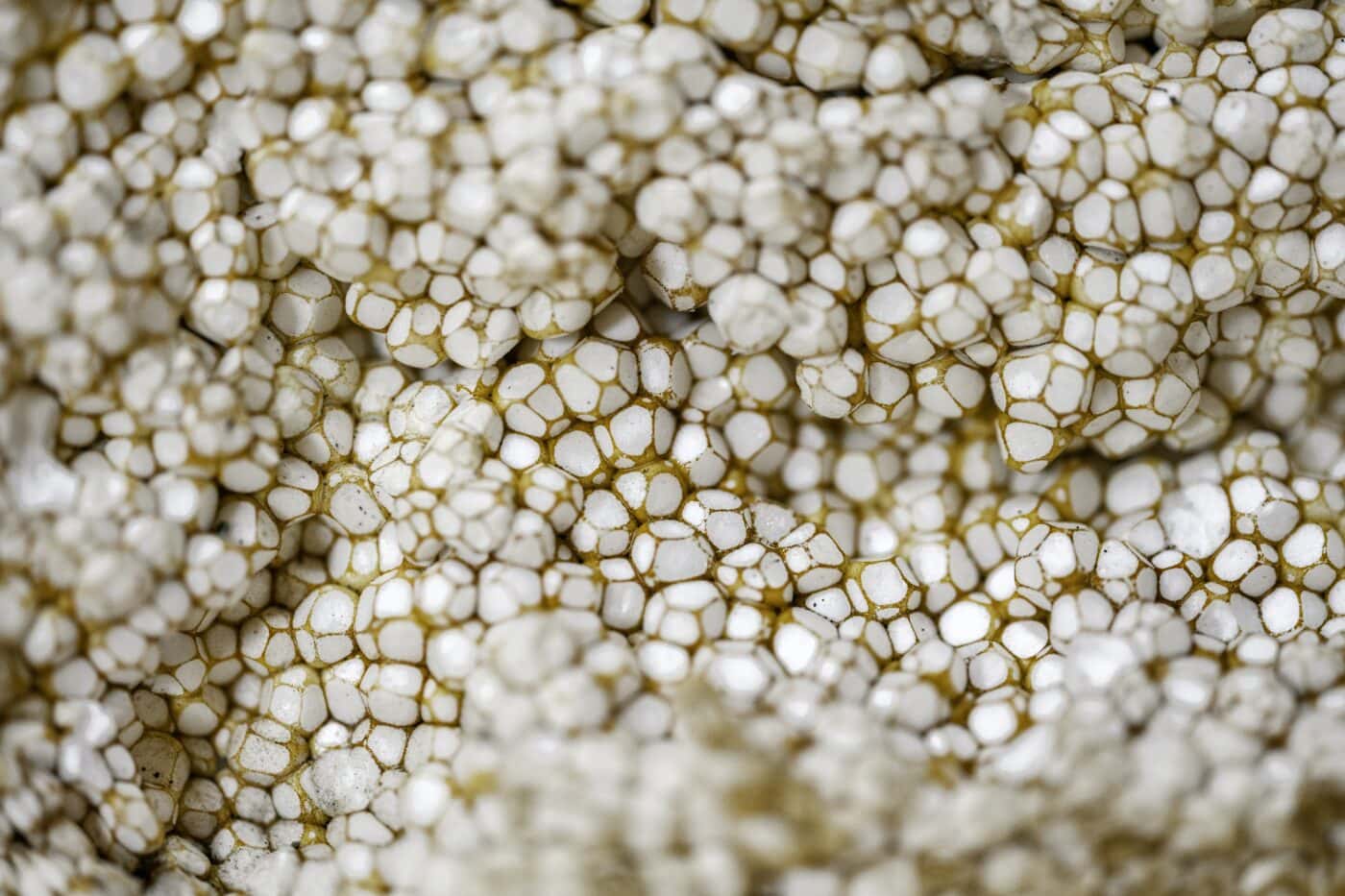
Andrew also spoke about drawing inspiration from found materials, versus going out and buying things from a craft store for a project. Using something that is trash or discarded gives it new life and is a way to recycle.
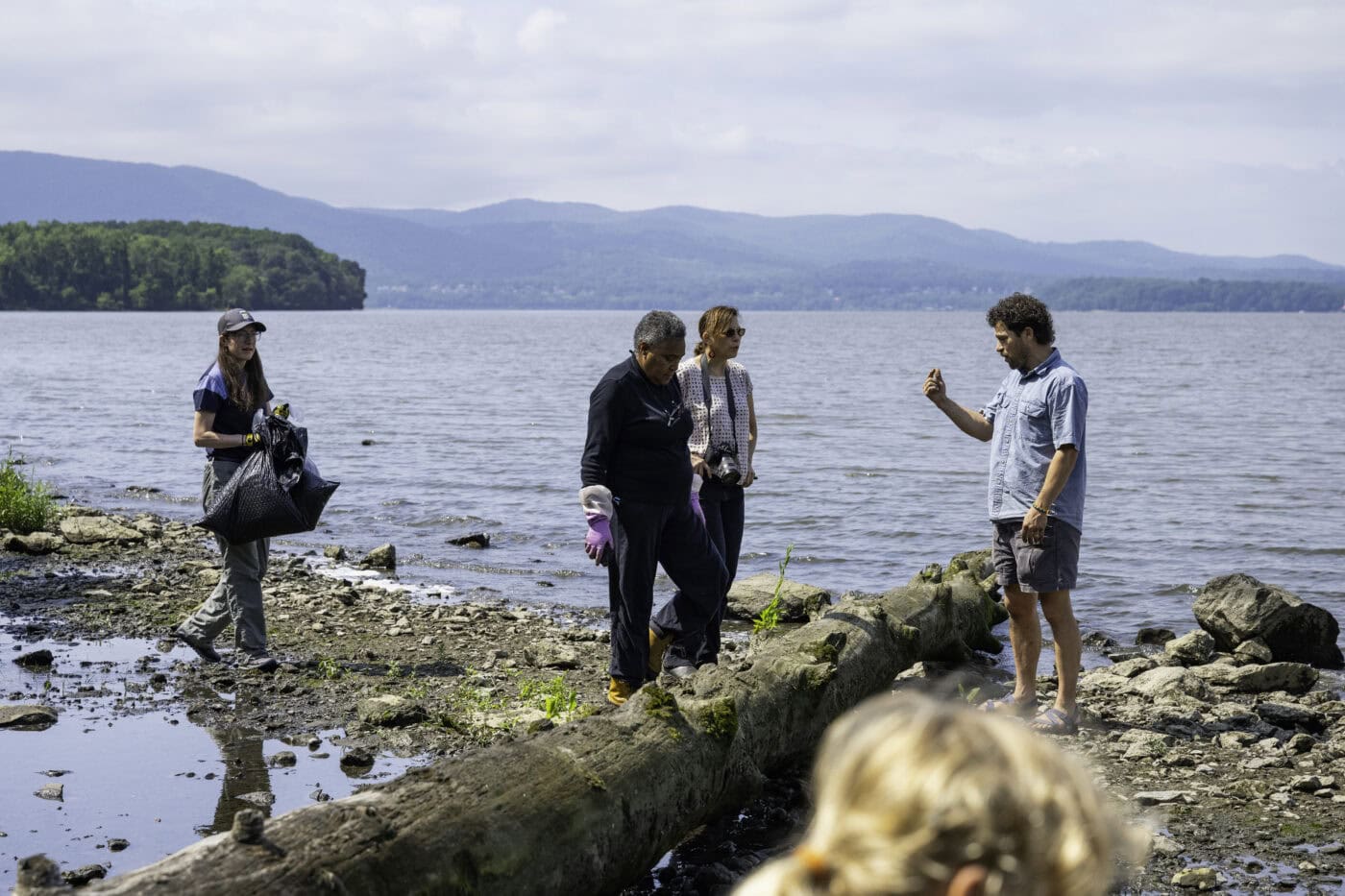
The walk to the riverfront where the group scavenged for materials took only five or 10 minutes. When we arrived, people peeled off to look for their own pieces of foam with interesting shapes, textures, and color.
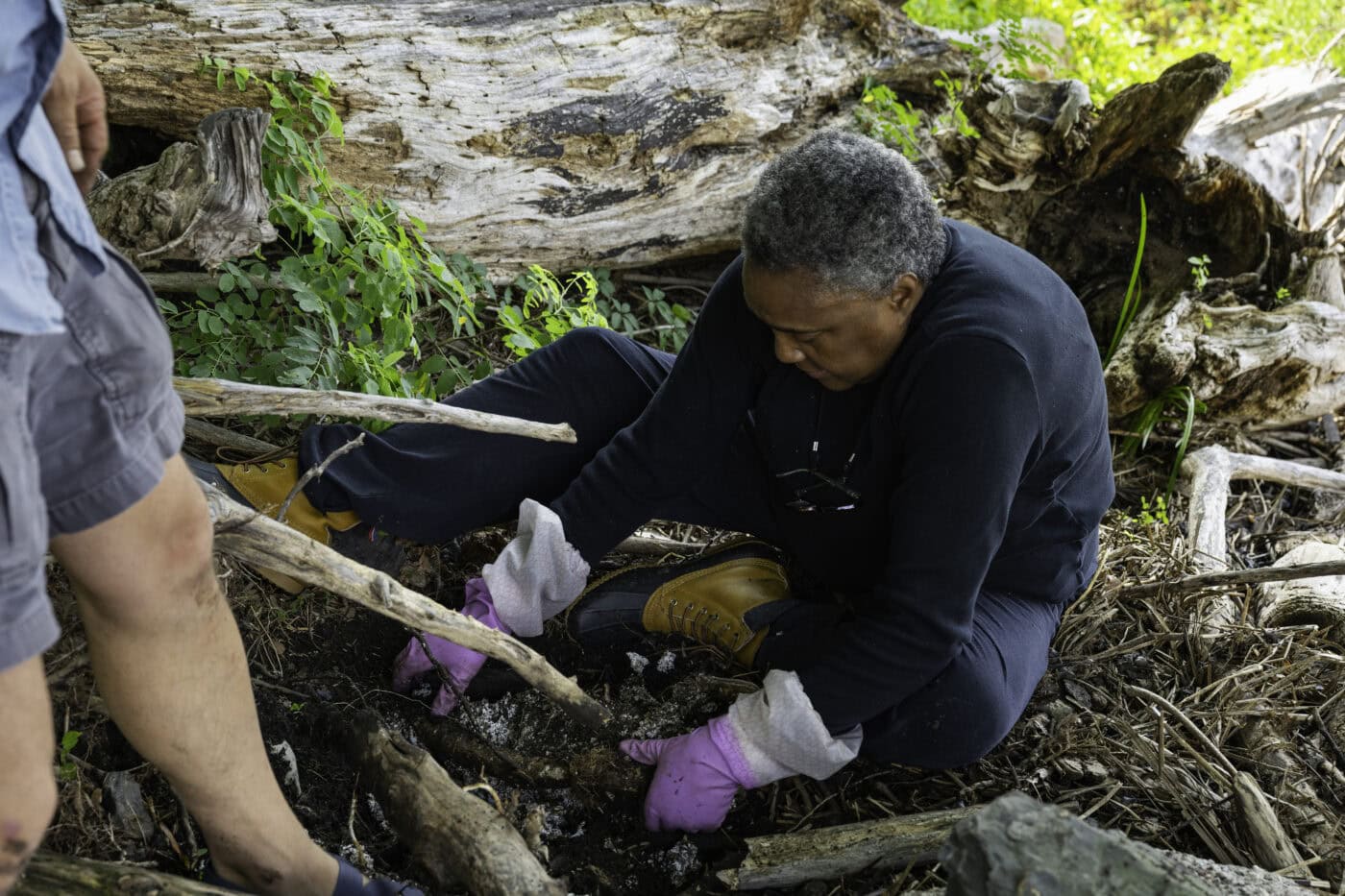
Andrew became invested in freeing a piece of foam that had been absorbed by the environment, with tree roots growing around it. Participant Deidre Woods jumped in to help. Eventually, the two of them were able to remove the foam from the tree base, and we tried to collect and throw away the foam debris.
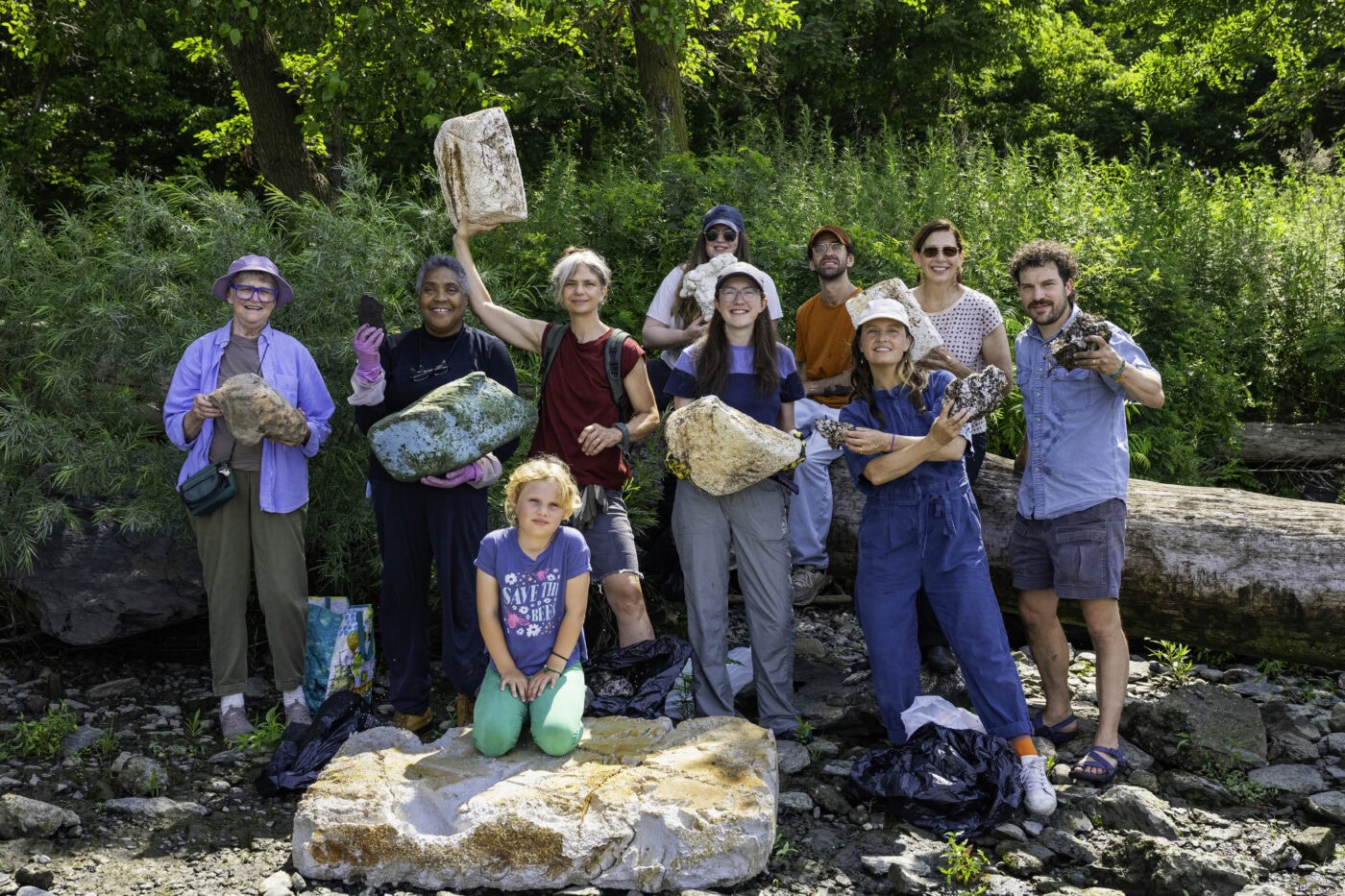
After a group photo with our scavenged foam (and a very large rectangular piece!), we headed back to the River Center.
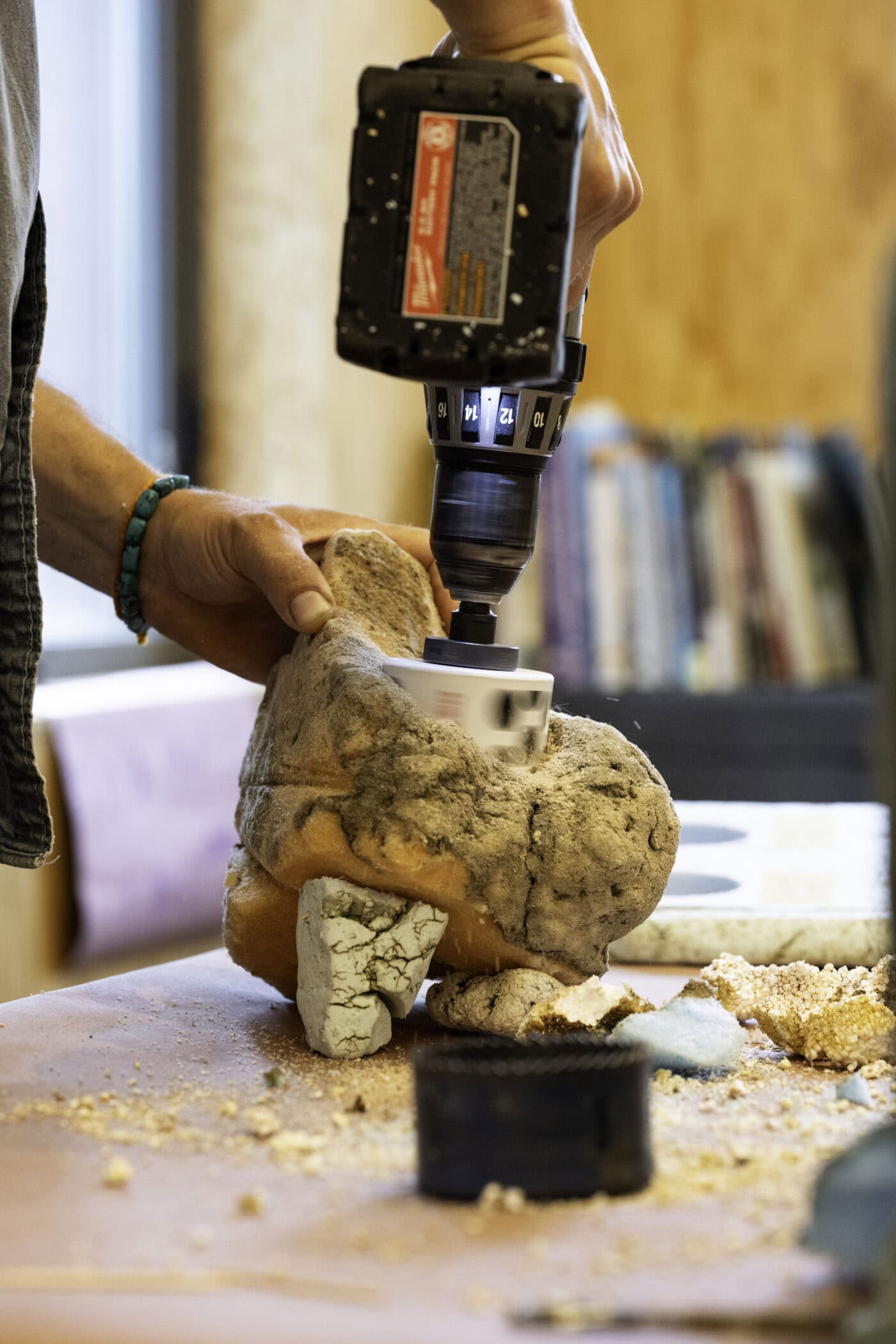
We broke up pieces of foam and experimented with attaching and rearranging them in different ways to create interesting forms and structures. We each chose a watertight vessel (glass iced tea bottles or a small yogurt ramekin) and designated the placement of it within our sculpture. Andrew drilled a hole for the vessel to be placed within the foam.

Once happy with the structure/sculpture we’d composed, participants applied the “goop” as a sealant to secure the pieces to each other and to seal the watertight vessel in place. The “goop” was a stone-gray color. Some people (like myself!) were happy with this color and left it. Others wanted to come back and paint their sculpture a different color over the “goop” coat.
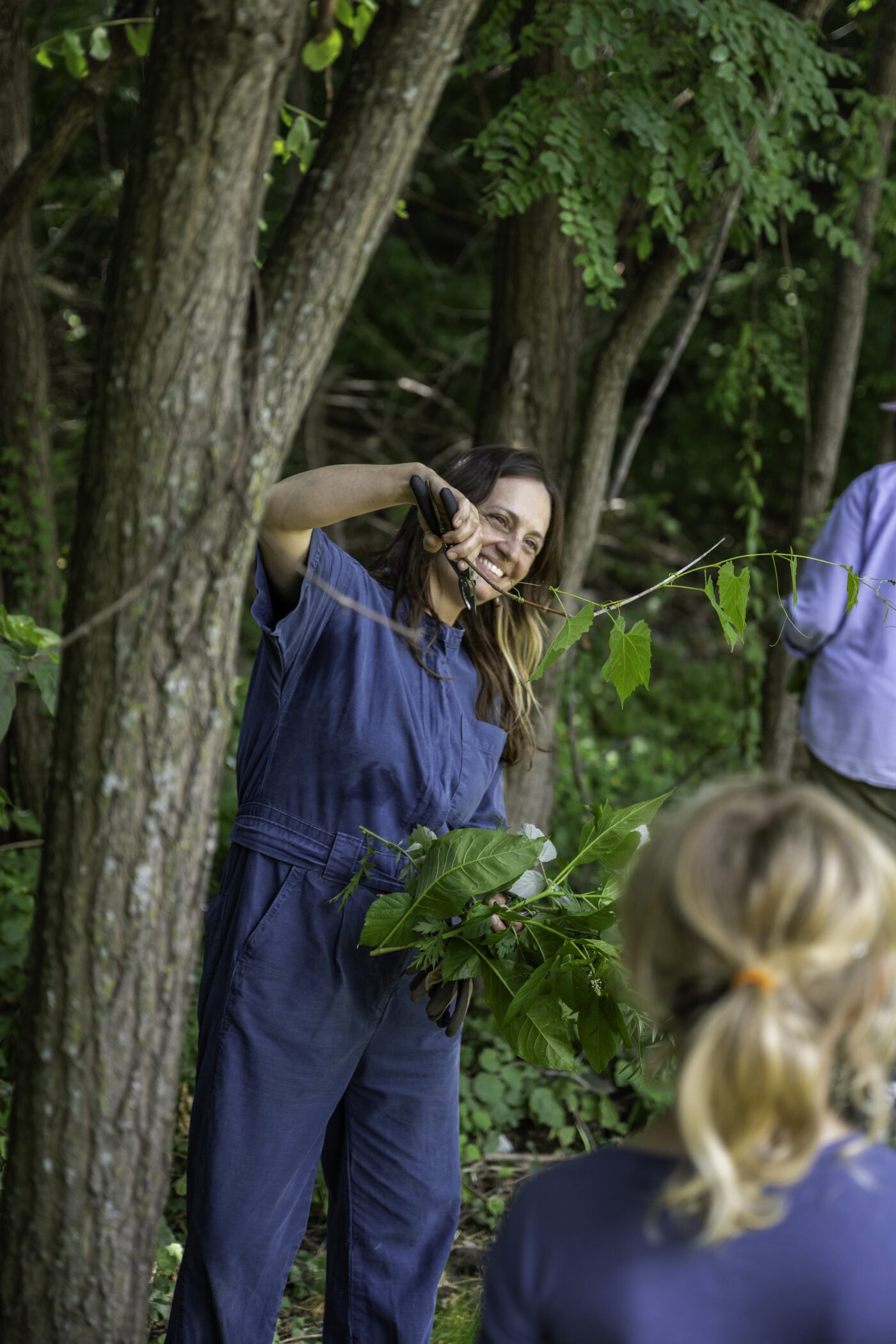
Then it was time to snip the “baddies,” as Jennifer called them. She took a handful of us who were done (or at a stopping point) with our sculptures outside around the River Center and pointed out specific invasive plants. She shared the basics of ikebana design: asymmetrical and minimal with three layers (earth, humanity, and heaven). She offered practical tips as well, since invasive plants are wildly aggressive. If you take plant material out of the park, she said, be sure not to compost your weeds. We should dry them on the sidewalk before throwing them in the garbage, or throw them into the fire.
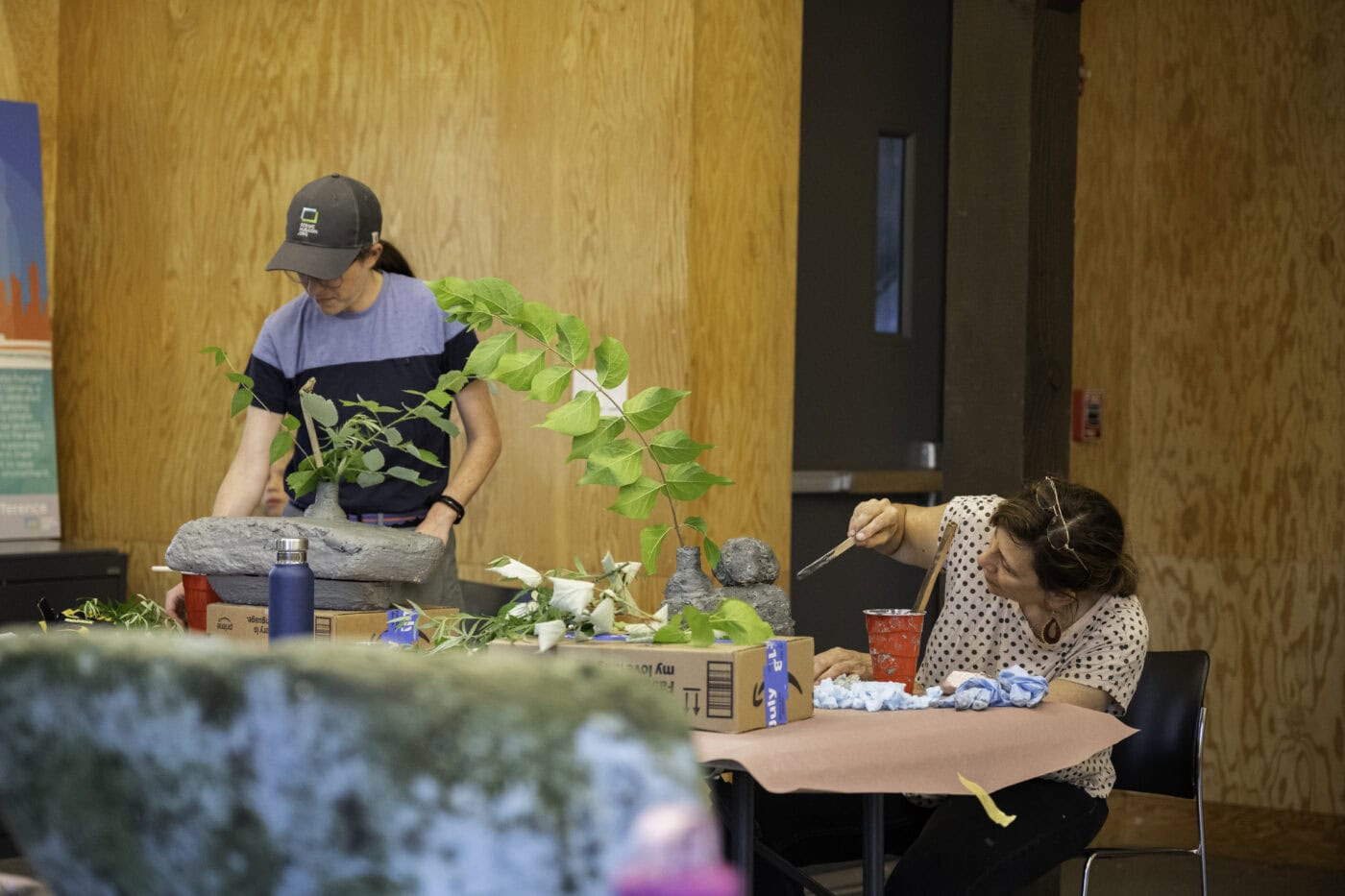
Once we were back inside with some clippings, she briefly explained to us the idea of “ikebana,” the Japanese art of floral arrangement. Emphasizing the idea of including three layers representative of earth, man, and heaven.
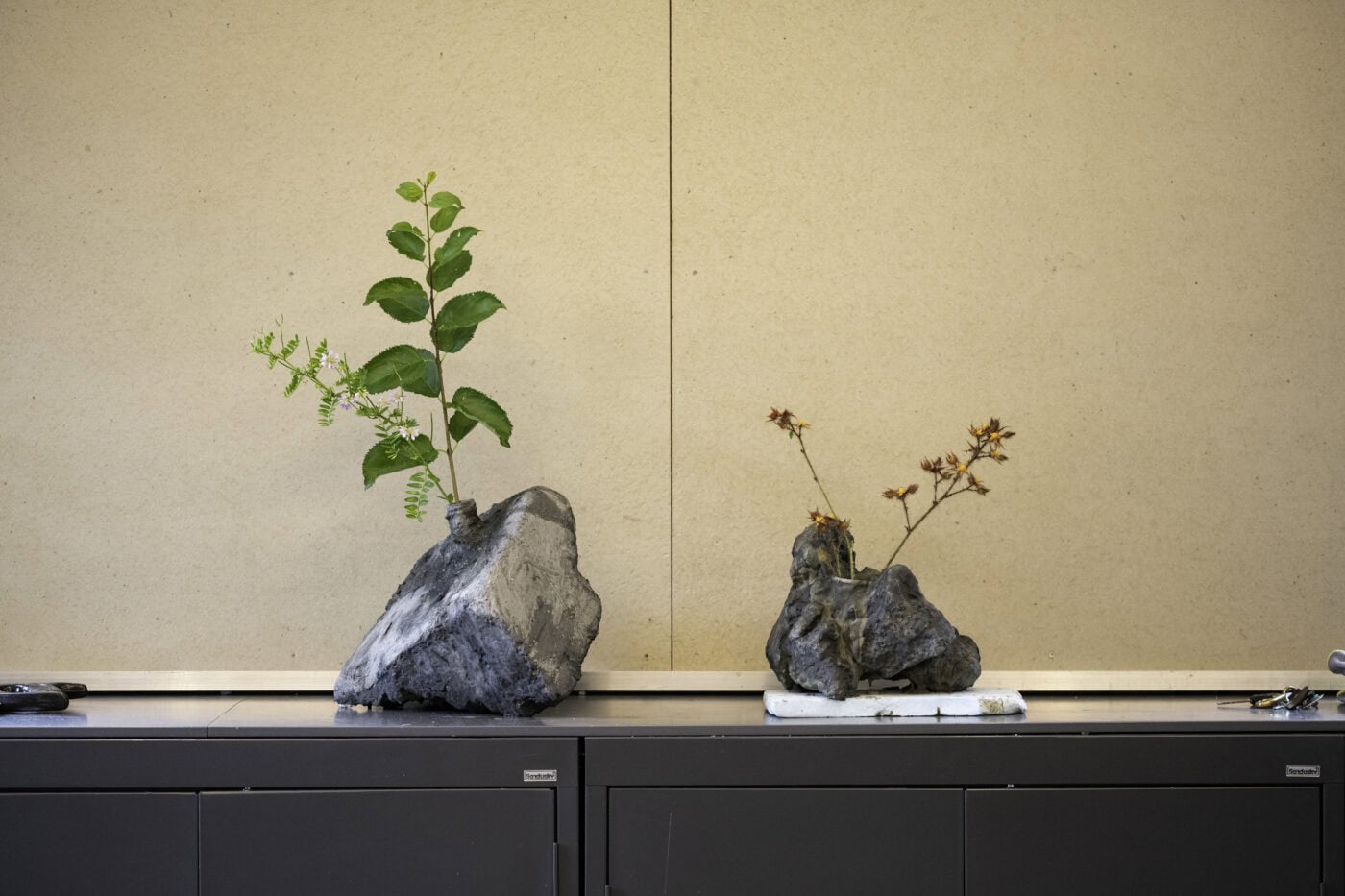
We were invited to arrange plant material to create composition — and to leave our vases for display during Upstate Art Weekend if we wanted, proving that eco-art is accessible to all of us.


